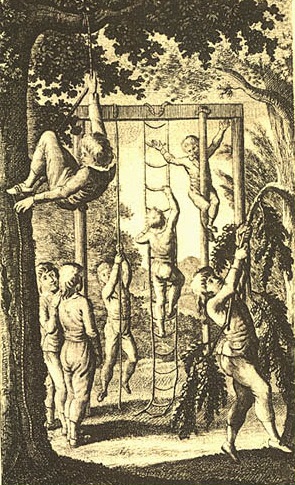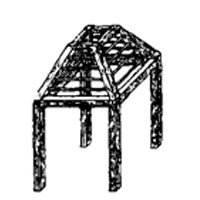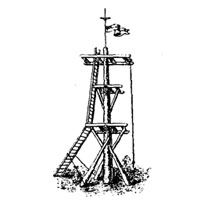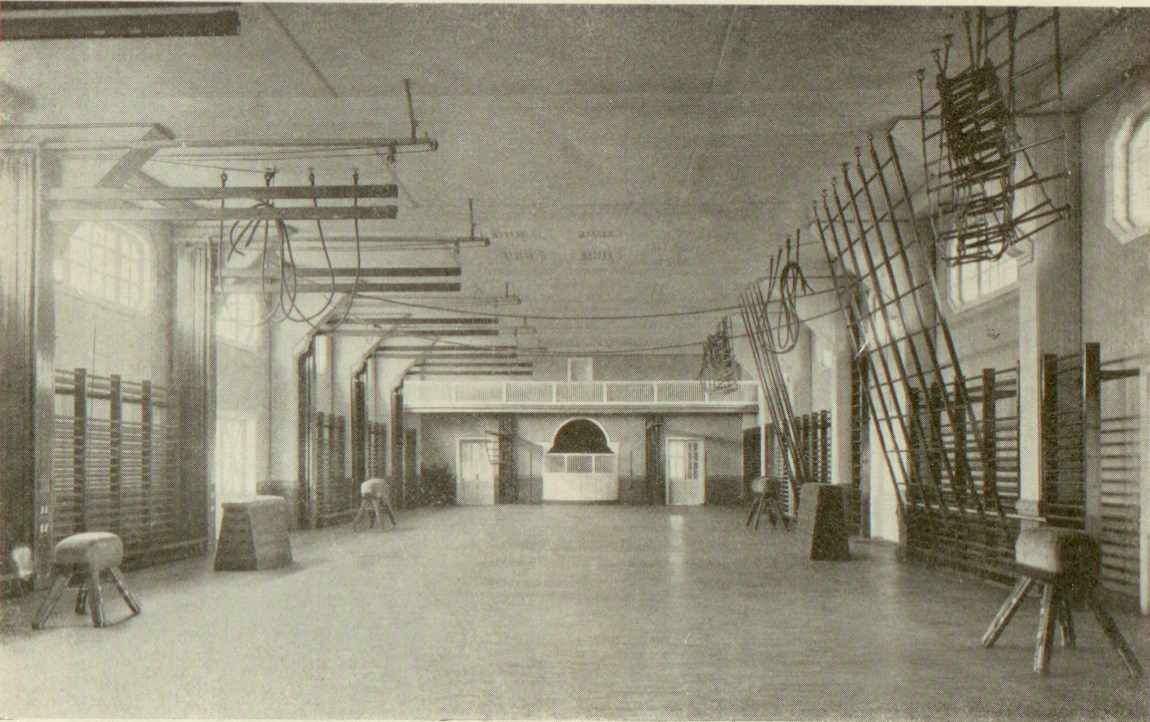Practice and theory resources
A short look back into history can be an inspiration for today outdoor exercises. Including natural exercises and obstacle overcoming in human activity reveal us the sense of these activities.
Iniciation rituals the ancient source of different exercises and obstacles which young men had to overcome on their journey to adulthood. By a ritual young men untied from a family and proved their transfer to adulthood. The iniciation exam was usually an accepting a young man to a certain community (tribe, kind).
Soldier preparation of all world armies - China, Japan, Rome, France, Germany, Great Britain
Philanthropy movement, Turner movement
Philanthropists (Basedow, du Troit, Gutsmuths, Vieth) included gradually to institutional (formal) education a general movement programme, which included elementary exercises – running, jumping, climbing, balance exercises and objects carrying. Besides natural objects – trees, rocks, ditches, bushes, different artificial aids were used – sand sacks, poles for jumps, artificial ditches, and simple constructions to trick-riding. These five elementary exercises, which substituted the organization demanding knight arts, became the basis in physical education practice in many German institutions.
Turners brought mass exercises under the open air into physical education, which were enabled by building artificial obstacles and gymnastic apparatus. Turners simplified the trick-riding horse and introduced horizontal bars, a bar and a beam. They also built high wooden constructions with hung ladders and ropes for climbing and balancing, which is less known.
French natural method
Georges Hébert is marked as a founder of the physical education system called “méthode naturelle“, or the natural method. He has created his system of physical exercises on the basis of the Marey French physiological school, which was a first attempt of a scientific approach to physical exercises, his cooperation with Démény and his observations. At first he focussed only on physical exercises for sailors. Later he realized the importance of physical fitness and expands his method for children and women. He refused artificial exercises, supported mainly the purposeful exercises in his work. He stressed the term of utilitarian gymnastics. Therefore he recommended only useful exercises and exercises necessary for life: running, jumping, climbing, lifting, throwing, fighting and swimming.
Sokol stay in nature and outdoor exercises
At the beginning of the 20th century Sokol reacts on the popularity of outdoor life. They founds clubs of outdoor life. Their exercises are mainly exercises in nature connected with camping and turistika activities. The exercise unit included running, overcoming obstacles, throwing, objects carrying, climbing, swings, fighting, swimming in clothes, water rescue. A significant promoter of camping, games and overcoming obstacles was Marie Provazníková.
Outward Bound
The organization, founded by Kurt Hahn, is significant for the development of ropes courses for everyone. Outward Bound purposefully used ropes courses in programmes for personal development.
Project Adventure
Project Adventure was inspired by Outward Bound and transferred practical experiences into school physical education. Gradually the project developed into an organization, which has become the most significant centre for the development of ropes courses.
Different programme forms and types
Testing courses for soldiers and rescuers - long history, today even the Czech training tower Jakub.
Children playgrounds since the 14th century – Italy.
Adventure playgrounds – impulses to their development in 1940s – Denmark, International Association of Adventure Playgrounds.
Obstacle courses in gyms – Germany, Czech Republic.
Vita Parcours – Swiss influence since the 1960s; fitness courses and forest gyms – influence from Scandinavia; Trimm courses – influence from Norway, Germany since 1960s.
Wellness grounds – since 1960s in the Czech Republic.
Media successful programmes – Fortress Boyard.
Today re-discovered forms of natural exercises: Parcours, Free running, etc.
Leading the programme
When leading an outdoor exercise programme we should respect the proven rules and recommendations. At first the control of clothing and shoes is important. Then the absence of rings and necklaces, plaited hair are very important in activities, which use crawling and climbing.
Similarly as for games and other activities, exercises also need to be started with an introductory motivation. The introductory motivation can influence participation in the activity and its course. Motivation can be realized in several ways, when it is up to the leader´s experience to judge which way to use. If there are more teams a competition is also a recommended way especially for younger age groups. Competitions are not suitable in cases when the exercise is focused on overcoming personal challenges (e.g. high ropes courses). Furthermore, it is possible to frame the exercise into a fictional story with an introductory acting or storytelling. The exercise can be introduced as a team task for a group, where we expect cooperation of individuals.
In many exercises only one or two members of a group are doing the activity. It is up to the leader to include other members into the activity, e.g. to save, help, belay, like rescuers, supporters. If the exercise means the top challenge for the individual (crossing a high beam, jumping at a hanging bar in space, etc.), it is not suitable to force the participant. A self-decision must be made by everyone. The other participants can only support this decision. Forcing the individual has a contradictory effect and the participant can be then afraid of another activity. Reflection is based on the process of decision making, or the way of solving the team task, when we get back to the realized activity. Participants should have the main word in reflection, the leader only moderates the discussion. Participants express their feelings which they had, what led them to their decisions, express their opinions on solving the team task and possibilities to making it better, on participants´ roles in team, etc.
 |
| “Gymnastik fuer die Jugend” (Gutsmuths, 1793) |  |
| Jahn´s “Klimmel” construction (Gasch, 1920) |
 |
| “Einbaum” (Gasch, 1920) |
 |
| Gym offering plenty of impulses to overcome obstacles(Brodský, 1939) |
